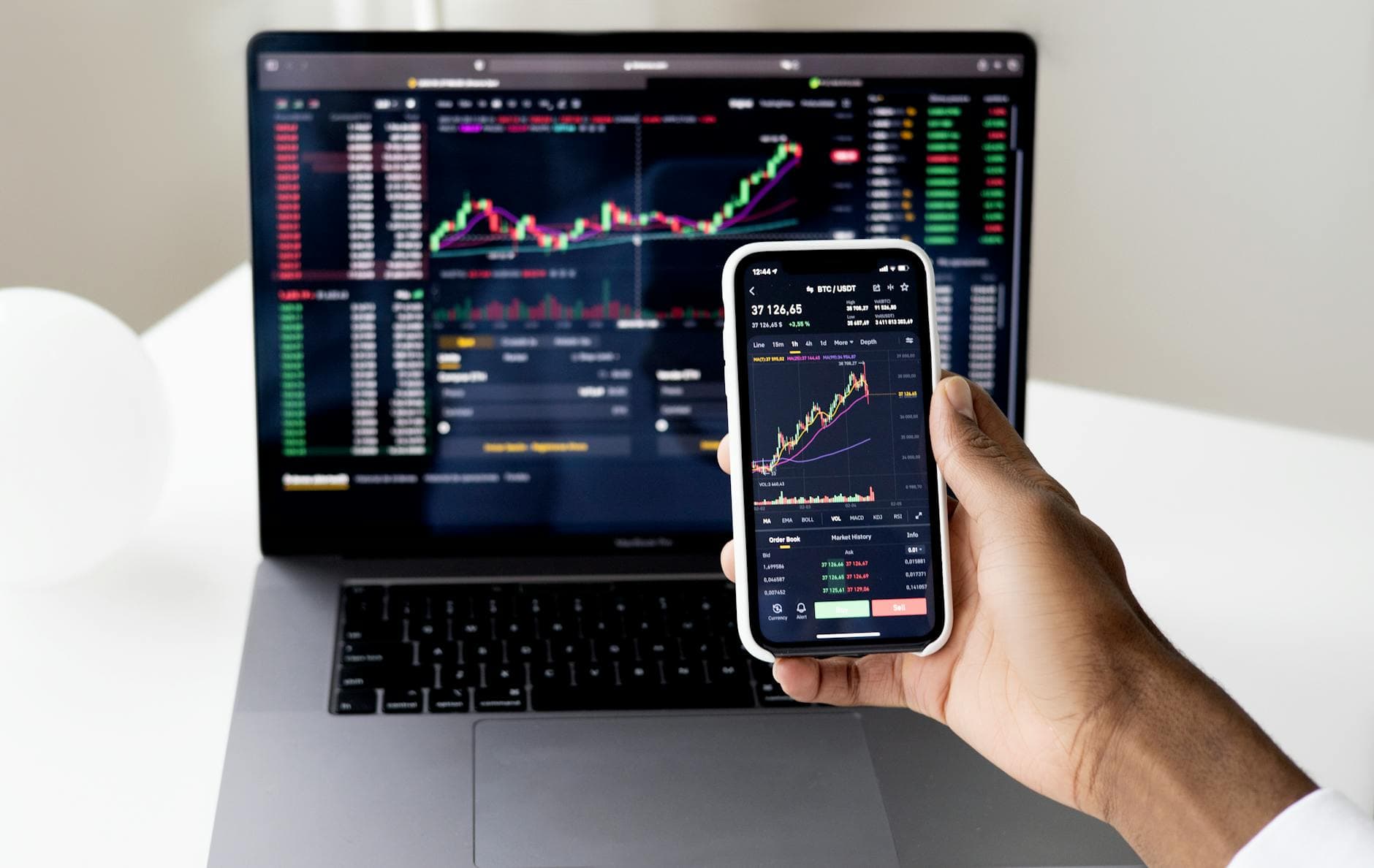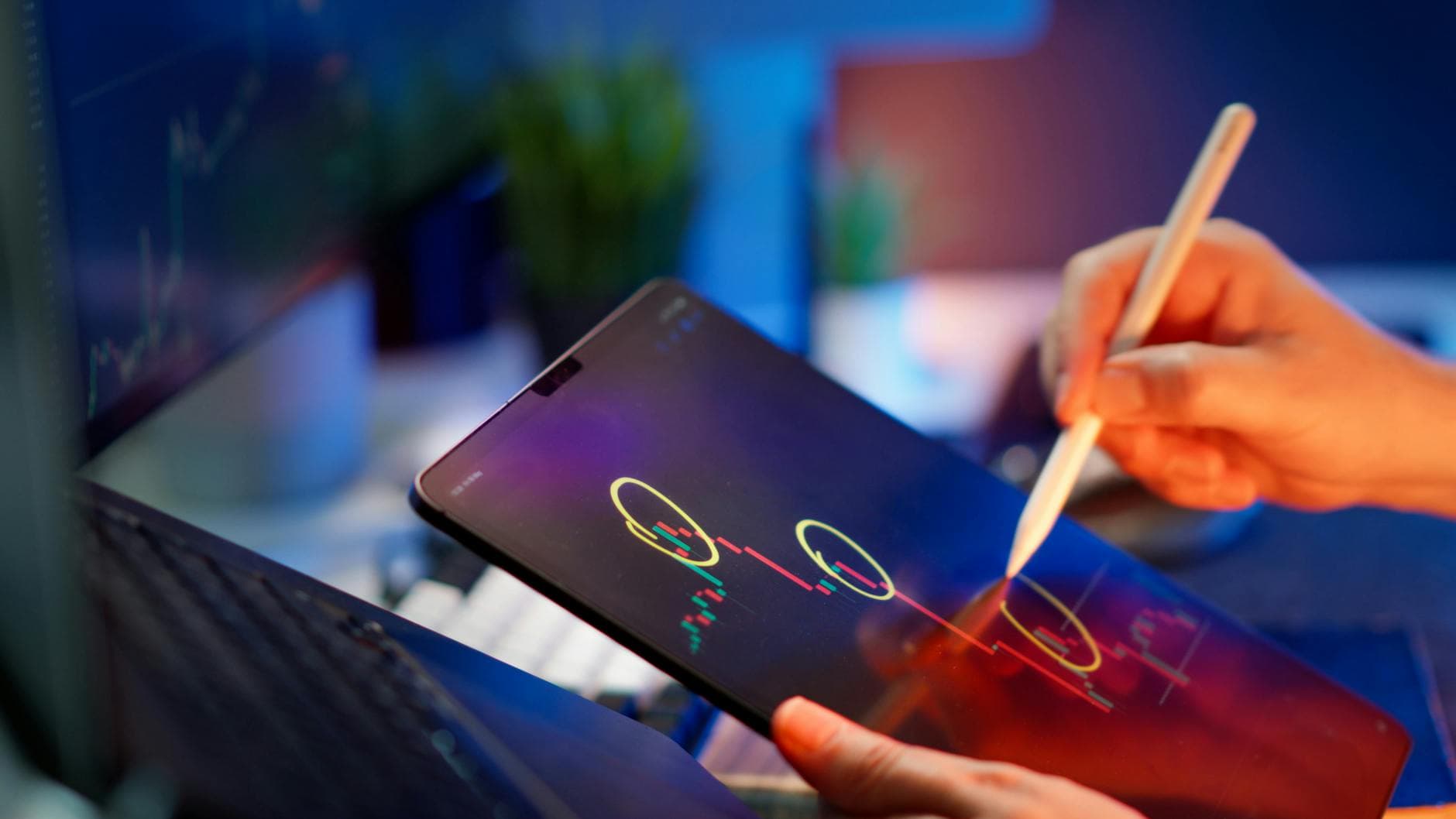From Demo to Live: Transitioning Your TradingView Paper Trading Strategy to Real Markets
Paper trading is an essential step in every trader's journey. It allows you to test strategies, build confidence, and develop skills without risking real capital. But there comes a time when you need to make the leap to live trading. This transition can be challenging, filled with psychological hurdles and practical adjustments that many traders aren't prepared for

The Critical Leap: Moving from Paper Trading to Live Markets with TradingView Strategies
Paper trading is an essential step in every trader's journey. It allows you to test strategies, build confidence, and develop skills without risking real capital. But there comes a time when you need to make the leap to live trading. This transition can be challenging, filled with psychological hurdles and practical adjustments that many traders aren't prepared for.
In this guide, we'll walk through the process of transitioning your successful TradingView paper trading strategies to the real market, helping you avoid common pitfalls and setting you up for success.
Why Paper Trading Success Doesn't Always Translate to Live Markets
Before diving into the transition process, it's important to understand why even the most successful paper trading strategies can falter when applied to real markets:
- Execution differences: Paper trades execute instantly at perfect prices, while real trades face slippage, delays, and rejections
- Psychological factors: Real money triggers emotional responses that don't exist in paper trading
- Market impact: Your actual trades (depending on size) can influence price, something paper trading doesn't simulate
- Fees and costs: Transaction costs eat into profits in ways paper trading may not accurately reflect
Understanding these differences is the first step in successfully transitioning your strategy.
6 Steps to Successfully Transition Your TradingView Strategy to Live Markets
1. Validate Your Paper Trading Results
Before risking real capital, thoroughly analyze your paper trading performance:
- Ensure you have at least 30+ trades to establish statistical significance
- Calculate key metrics like win rate, average profit/loss, maximum drawdown, and Sharpe ratio
- Look for strategy performance across different market conditions (trending, ranging, volatile)
- Be honest about whether you followed your rules exactly or made discretionary adjustments
TradingView's Strategy Tester is excellent for this validation process, allowing you to see detailed performance statistics and verify your strategy's robustness.
2. Adjust for Real-World Execution
Modify your strategy to account for real-world trading conditions:
- Add slippage assumptions: In TradingView's Strategy Tester, use the slippage settings to simulate more realistic entry and exit prices
- Include commission costs: Factor in your broker's fee structure to get accurate profit projections
- Consider liquidity: Strategies that work for small positions might not scale with larger capital
- Plan for alternate entries/exits: Have contingency plans for when your ideal entry/exit points aren't available
These adjustments will give you a more realistic expectation of how your strategy will perform in live markets.
3. Start with Reduced Position Sizes
Even with a thoroughly tested strategy, the transition to live trading should be gradual:
- Begin with significantly smaller positions than your ultimate target (10-25% of planned size)
- Track performance metrics closely and compare them to paper trading results
- Look for discrepancies that might indicate needed strategy adjustments
- Gradually increase position size as you confirm the strategy works in live markets
This approach minimizes risk while you adapt to the psychological differences of live trading.
4. Implement Robust Risk Management
Risk management becomes even more critical when transitioning to live trading:
- Set hard stop-losses for every trade (mental stops aren't reliable under pressure)
- Limit per-trade risk to 1-2% of your total trading capital
- Establish daily and weekly loss limits that trigger a trading pause
- Use TradingView's alert functionality to automate stop-loss notifications
Remember that preserving capital is your first priority—a strategy that loses less during drawdowns will ultimately outperform one that makes more but risks blowing up your account.
5. Prepare Psychologically
The psychological aspect of transitioning to live trading is perhaps the most challenging:
- Establish a pre-trade routine to center yourself before making decisions
- Keep a trading journal documenting not just trades but emotional states
- Set realistic expectations—expect performance to initially be worse than paper trading
- Create rules for when to take breaks after losses to prevent emotional trading
Many traders find that the hardest part isn't developing a winning strategy but sticking to it when real money is at stake.
6. Leverage TradingView's Tools for the Transition
TradingView offers several features that can help smooth your transition to live trading:
- Alerts: Set up alerts based on your strategy conditions to avoid constantly watching charts
- Multiple timeframe analysis: Confirm signals across different timeframes for higher confidence trades
- Save layouts: Create dedicated workspaces for different market conditions
- Strategy automation: Consider connecting TradingView to execution platforms to remove emotional decision-making
These tools can help bridge the gap between paper and live trading by providing structure and discipline.
Real-World Case Study: Sarah's Transition Story
Sarah had developed a breakout strategy in TradingView that showed impressive 32% annual returns in paper trading over six months. When she transitioned to live trading, her first month resulted in a 7% account drawdown despite following the same rules.
After analyzing the differences, she discovered:
- Her paper trades had perfect entries at breakout points, while her live trades often faced slippage of 0.2-0.5%
- She was hesitating on entry signals due to fear of loss, missing optimal entry points
- Transaction costs were higher than she had modeled in her backtest
Sarah made three key adjustments:
- Added 0.5% slippage assumption to her strategy model and adjusted entry thresholds accordingly
- Created TradingView alerts to notify her of setups, reducing the need to watch charts constantly
- Reduced position sizes to help manage her emotional response to trades
After these changes, her next three months showed a 14% annualized return—not as high as paper trading but sustainable and profitable with lower stress.
Common Transition Mistakes to Avoid
Be aware of these frequent pitfalls when moving from paper to live trading:
- Strategy hopping: Abandoning your strategy after a few losses instead of evaluating if they fall within expected parameters
- Overtrading: Increasing trade frequency to "make up" for losses
- Ignoring transaction costs: Failing to account for the cumulative impact of spreads and commissions
- Revenge trading: Making impulsive trades to recover losses
- Excessive leverage: Using too much leverage to amplify paper trading returns
Each of these mistakes can undermine an otherwise sound trading strategy.
When to Consider Pre-Built TradingView Strategies
If you're struggling with the transition to live trading, pre-built strategies from TradingView's Strategy Marketplace can offer advantages:
- They've often been tested across various market conditions and timeframes
- Many include realistic slippage and commission assumptions
- Good strategy providers offer setup guides and support for live implementation
- You can see verified track records rather than relying solely on your own testing
For traders finding the transition challenging, starting with a proven strategy can provide a solid foundation while you develop your skills and confidence.
Conclusion: Patience is Key in the Transition Process
Moving from paper trading to live markets is a significant milestone in your trading journey. Expect the process to take time and include some setbacks. The traders who succeed in this transition are those who approach it methodically, maintain realistic expectations, and prioritize risk management above all else.
Remember that even professional traders typically see different results between their models and live trading. The goal isn't perfect replication of paper trading performance but rather developing a sustainable edge that works in real market conditions.
By following the steps outlined in this guide and leveraging TradingView's powerful tools, you'll be well-positioned to make this critical transition successfully.
Have you recently made the leap from paper to live trading? Share your experience in the comments below!


